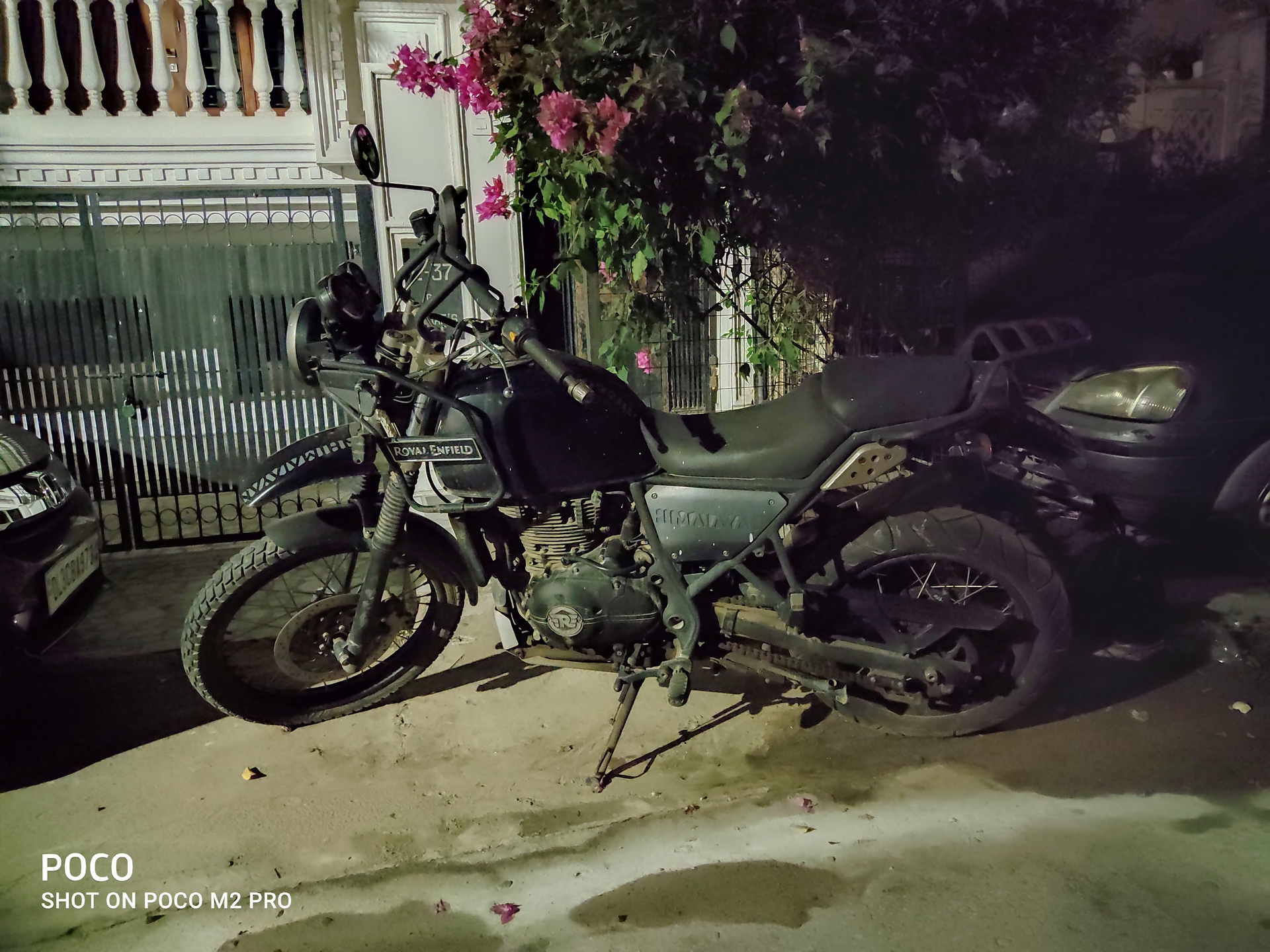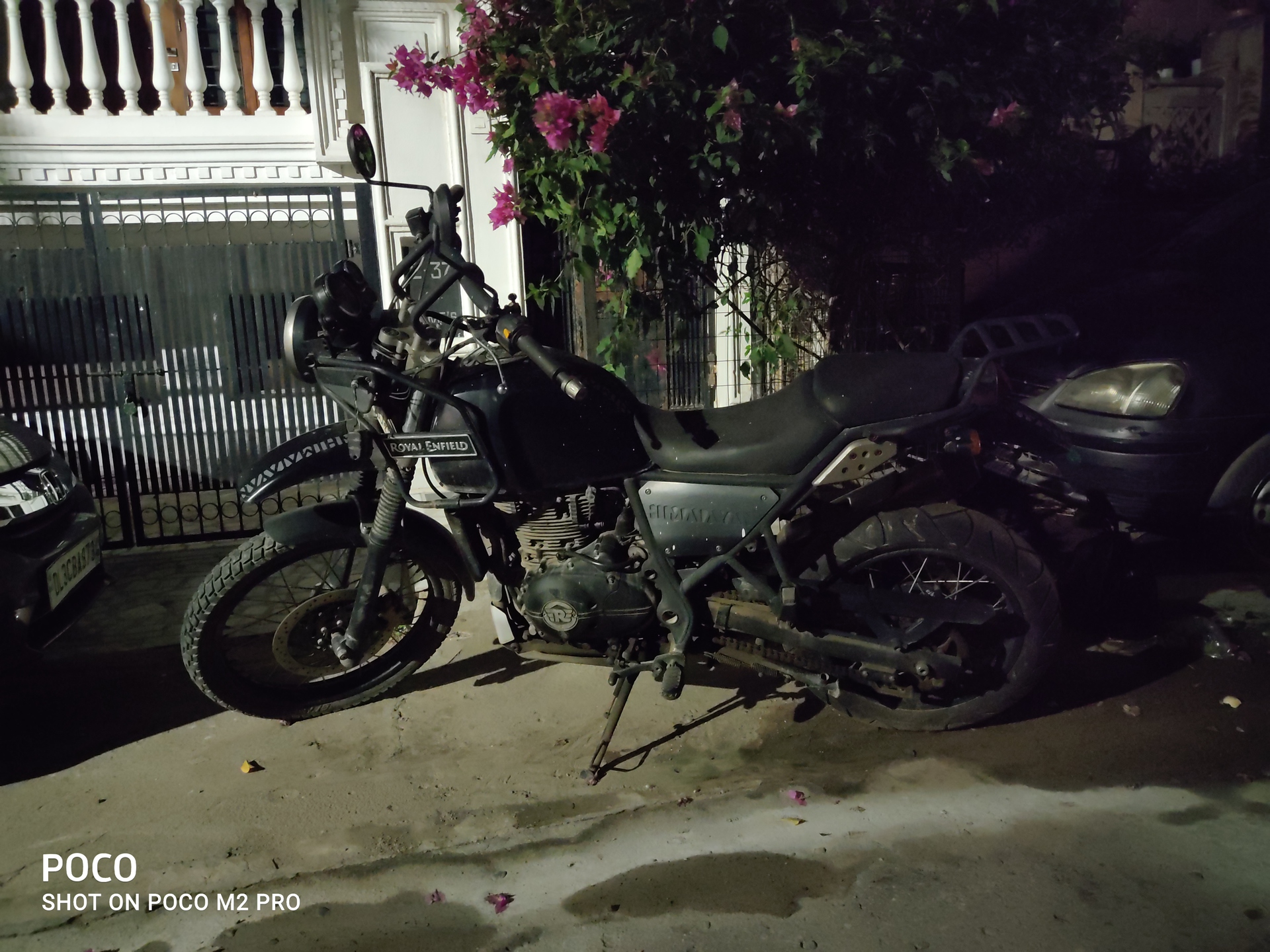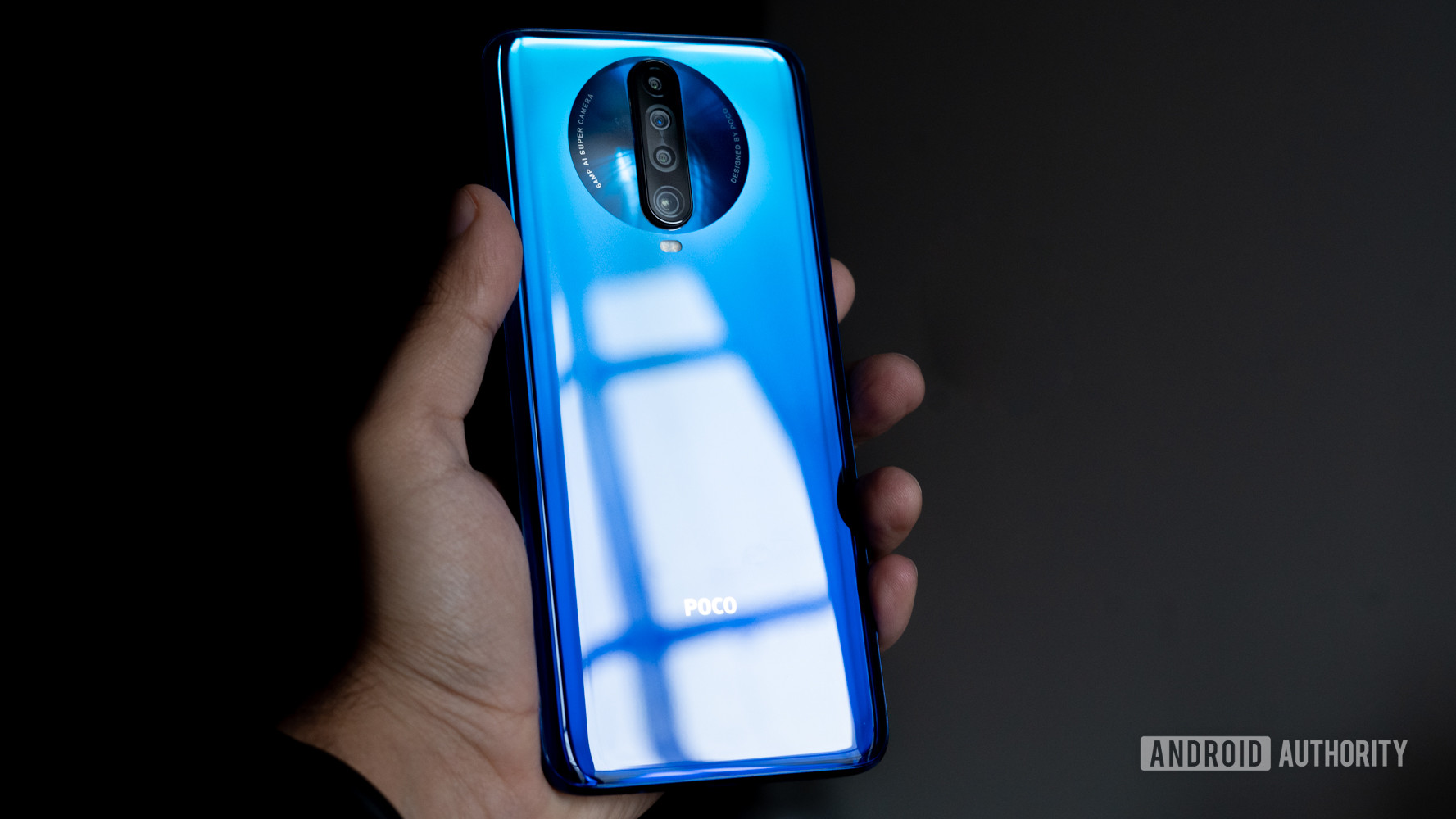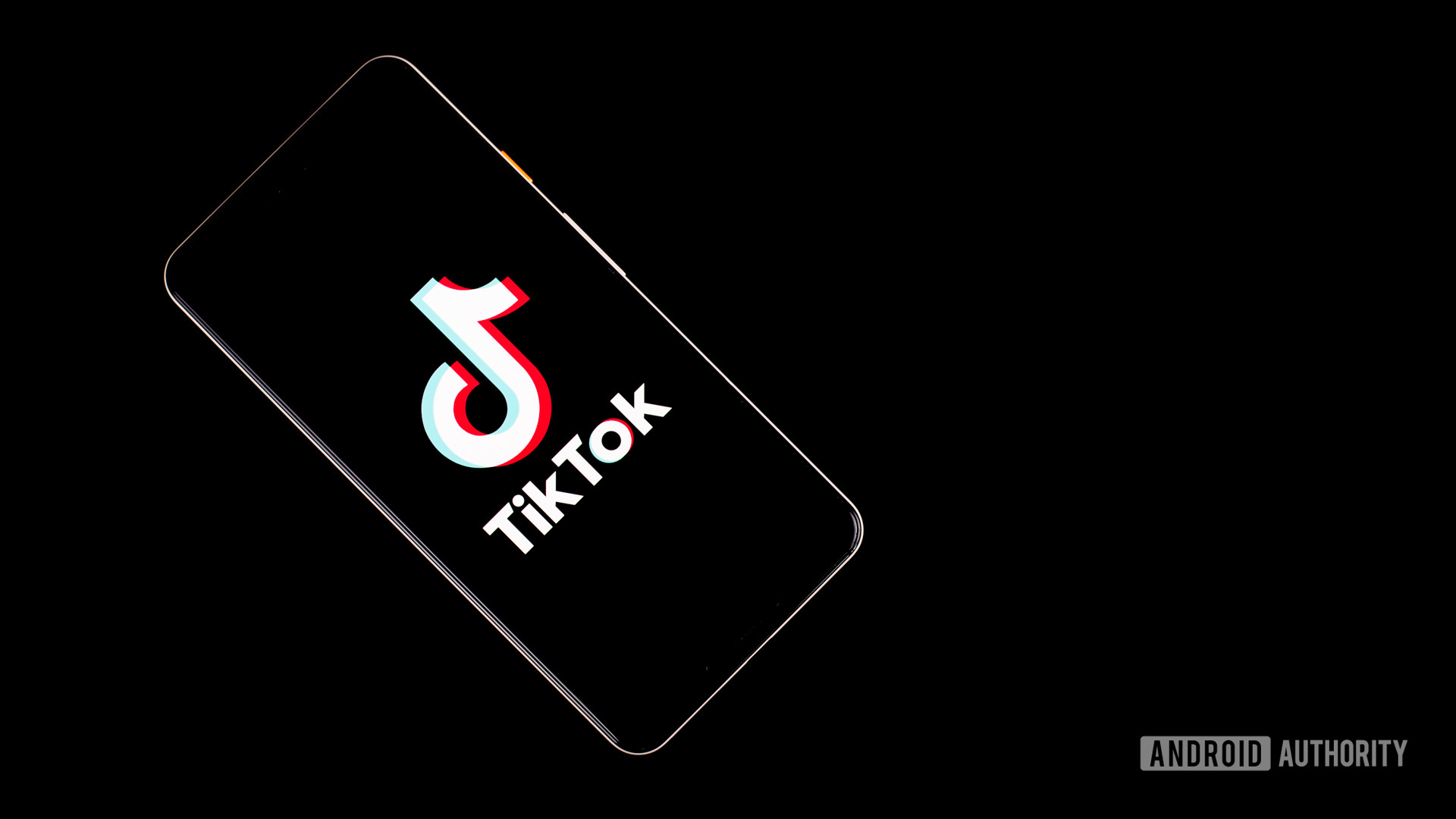Poco established itself on the premise of tremendous value. The OG, the first Pocophone F1, delivered cutting-edge specs, while making the right compromises to hit an incredible price point. Since then, the market has changed quite a bit and Poco has followed the trends. Following the spin-off into an entity of its own, Poco introduced the long-awaited successor to the F1, the Poco X2 Pro. An affordable option, the phone delivered on the Poco ethos through a 120Hz high-refresh-rate panel and a powerful Snapdragon 730G chipset in the mid-range segment.
Now, Poco is poised to hit yet another price point. The Poco M2 Pro is the company's attempt at differentiation through a big battery, fast charging, and a powerful chipset at a budget price point. Will it be enough to go against stablemates like the Redmi Note 9 Pro? We find out in the Android Authority Poco M2 Pro review.
Design: You've seen this before
- 165.8 x 76.7 x 8.8 mm
- 209g
- P2i water resistant coating


If you, like me, did a double-take on looking at the Poco M2 Pro, no you're not seeing things. Look, the irony isn't lost on me that a Xiaomi sub-brand has essentially ripped off a stablemate design. The phone is nearly identical to the Redmi Note 9 Pro. The phone makes a play on Xiaomi's Aura Balance design with a slightly edgier take.


The biggest changes are on the rear panel, and the Poco M2 Pro opts for an almost Pixel-like design. The glass panel is divided in two with an almost 2:3 split. The lower half has a diagonal-line pattern, while the upper half is a straightforward glossy pane.
The rear panel of the Poco M2 Pro has a design reminiscent of the Pixel series.
Unlike the Pixel series and its surface-etched design, the design here is etched under a Gorilla Glass 5 pane, which is brilliantly glossy and extremely prone to catching scuffs and fingerprints. Keeping the Poco M2 Pro clean is frustrating, which is a bit of a shame. The design is distinctive and I would have liked to show it off. All said and done, it is advisable to use the included TPU case or a high-quality alternative.


Like the Redmi Note 9 Pro, the camera module sits fairly proud off the shell and I found it catching on my jeans pocket while sliding the phone in. The similarities extend to the side-mounted fingerprint sensor. Cool as in-display fingerprint sensors are, I love the tactile feedback afforded by a quality side-mounted fingerprint sensor doubling up as a power key. The Poco M2 Pro's implementation is as good as they come and the fingerprint sensor unlocks the phone in a blink of an eye.


Elsewhere, you will find a standard USB-C port along the bottom edge. To the left of the USB port lies a 3.5mm audio jack. Unfortunately, there is no IP rating here, but the phone offers up a modicum of splash resistance so you should be okay with a stray splash if you get caught in the rain.


Overall, the Poco M2 Pro is a play on an existing formula, but I like what the company has done with the rear panel. It adds a bit of differentiation in the segment and looks rather good to boot. I can't find much to complain about the ergonomics either. A slightly unwieldy volume rocker aside, the phone feels great to hold. My only gripe is with the weight. Clocking in at 209g, the phone is heavy and you can certainly feel the heft when holding up the phone for longer durations.
Display
- 6.67-inches
- 1080 x 2400 pixels
- 20:9 aspect ratio


The Poco M2 Pro sports a 6.67-inch Full HD+ display with a centered camera cutout. The refresh here is a standard 60Hz, and I would have liked to see the M2 Pro go up against the likes of the Realme 6 and its 90Hz refresh rate, given the similar positioning.
The display goes bright enough for outdoor use, but the glossy panel might make it difficult to use in direct sunlight.
At its default setting, the screen has a proclivity towards over-saturating colors, however, the built-in standard color profile presents a very well-balanced and natural-looking image that should please purists.
I measured peak brightness levels at about 452 nits, which was sufficient for outdoor viewing. The glossy panel, unfortunately, does not lend itself very well to usage in bright sunlight, and panel reflections can be irksome, to say the least.
Performance
- Snapdragon 720G
- 2×2.3 GHz Kryo 465 Gold & 6×1.8 GHz Kryo 465 Silver
- 4/6GB RAM
- 64/128GB storage, microSD slot
Powering the Poco M2 Pro is a Snapdragon 720G chipset that combines two Kryo 460 Gold cores with six Kryo 465 Silver cores and an Adreno 618 GPU aiding in graphics functions.
Performance is more than satisfactory for the class of devices the Poco M2 Pro competes in. The phone is more than capable of powering through anything you throw at it. In my time with the phone, I never felt it lacking for power in daily functions and the 6GB of RAM in the variant on hand proved to be sufficient for all multitasking.
The Poco M2 Pro did not heat up drastically even with extended gaming.
MIUI is well polished and simply flies on the hardware. Now, I'm not much of a mobile gamer but the phone threw up no issues at all in the few rounds of PUBG I got in. In fact, even with the graphics cranked up to eleven, the phone was just warm to the touch after half an hour of gaming. Hefty weight aside, gaming on the Poco M2 Pro was a comfortable experience.
Battery
- 5,000mAh battery
- 33W charging
Catering to a demographic that clamors for extended longevity, Poco has bumped up the battery here to 5,000mAh, over the 4,500mAh cell on the Poco X2. I put the Poco M2 through the Android Authority battery torture test that loops our very own Speed Test G benchmark. This is a true test of the maximum battery potential when the phone is running at maximum power and the results lived up to expectations.
Fast 33W charging and a 5,000mAh battery means you can comfortably get two days of use out of the Poco M2 Pro
The phone clocked in 7 hours and 27 minutes of screen on time which is very good. Most users should fare better. I doubt anyone will find fault with the battery life on the Poco M2. Elsewhere, a huge step forward compared to Redmi Note 9 Pro is support for 33W charging. Using the included charger, I was able to top off the phone from scratch in 1 hour and 18 minutes. This makes the Poco M2 Pro one of the fastest charging phones in the segment.
Software
- MIUI 11
- Android 10
- June 2020 security patch


The Poco M2 Pro runs MIUI 11 as you'd expect, and the software has its positives and negatives. There are ample features here to customize and tweak the interface exactly to your liking.
Now, I've talked ad-nauseam about my disdain for spammy advertising on mid-range hardware and I'm delighted to note that there's none here. The few pre-installed apps can be disabled for the most part. The onboard apps are a curious mix and even include a few like Helo that is part of the 59 apps banned in India. Looks like someone at Poco didn't get the memo ¯\_(ツ)_/¯
Like it was the case on the much higher-end Xiaomi Mi 10, the GetApps application has a tendency to spam the notification shade and it gets irksome real quick.
That minor quibble aside, the Poco M2 Pro nails the brief, and MIUI 11 on this phone is a rather enjoyable experience. The Poco M2 Pro further differentiates itself by running Poco Launcher instead of the default MIUI launcher. This adds some versatility like an app drawer that was recently added to the MIUI launcher, as well as smart categorization of apps.
In that sense, the phone can also be considered the Redmi Note 9 Pro without the annoying advertisements and that's definitely a great place to be in.
andCamera
- 48MP Samsung GM2 primary sensor
- 8MP ultrawide sensor
- 5MP macro camera
- 2MP depth camera


The raised camera island at the back of the Poco M2 Pro includes a 48MP primary sensor paired with up an 8MP ultrawide camera as well as a 5MP depth sensor. Finally, there is a 2MP depth sensor included for better portrait mode images.


Image quality isn't too bad in broad daylight. I found color processing to be on the warmer side and the phone opts for a slightly saturated tone instead of boosting shadows or over-exposing. In fact, the dynamic range is rather good too, with a decent amount of detail in darker areas and the ability to recover a reasonable amount of detail if you are willing to shoot in RAW mode.


However, once again, just like the Redmi Note 9 Pro there is a softness to the images and pixel-peeping reveals a lack of detail. The images are pixel-binned down to 12MP from the 48MP Samsung GM2 sensor and there is just a hint of grain to the shots. The phone doesn't do too well with shooting directly into the sun or a light source either, with significant lens flare cropping up.

 Poco M2 Pro standard camera Poco M2 Pro ultrawide
Poco M2 Pro standard camera Poco M2 Pro ultrawide 

Ultra-wide shots on the Poco M2 Pro are par for the course and are a bit over-saturated compared to images from the primary camera. There is also a visible difference in color accuracy between shots from the 48MP sensor and the ultrawide camera. Portrait mode detection, however, is very good and I observed excellent edge detection.


Finally, the 5MP macro camera does a fair job at taking close up shots. The resolution and detail aren't anything to write home about, but it serves in a pinch and it is possible to capture some very interesting angles. Personally, I would have preferred a telephoto lens instead.

 Poco M2 Pro low light image Poco M2 Pro low light night mode
Poco M2 Pro low light image Poco M2 Pro low light night mode 

In low-light settings, the camera on the Poco M2 Pro completely falls apart. Both in regular and night mode, the images exhibit significant grain and digital artifacts. I wouldn't count on the camera here if night imaging is a big deal for you and competing devices from Realme do a significantly better job.
Video mode isn't too bad and the Poco M2 Pro can capture good-looking 4K video at 30FPS. In fact, you can even shoot video from the macro and ultrawide cam though those are capped at 1080p, 30FPS. Exposure levels are a bit inconsistent across the different camera modes with the phone opting for a brighter exposure level over a more natural-looking image. If you want a more cinematic setting, it is possible to shoot in a 21:9 aspect ratio. Bear in mind that this is simply a crop and not a native 21:9 video.
You can take a look at full resolution Poco M2 Pro camera samples here.
Audio
- 3.5mm audio jack
- AptX, AptX HD and LDAC support
The Poco M2 Pro sports a headphone jack along the bottom edge and audio output is plenty good for the price. There is no untoward hiss or noise even when listening with high-quality gear. The music output is loud with a slight bass emphasis. An in-built system-wide equalizer lets you dial-in the sound to your preference, and in case you sport Xiaomi's audio gear, there are set profiles that tweak the sound signature specifically for the earphones.
I wasn't too enthused by the quality of the speaker. It goes loud, but sounds a bit tinny with no bass to speak of. The lack of stereo speakers is sorely missed as well.
On the Bluetooth side of things, the Poco M2 Pro supports all modern standards including AptX, AptX HD and LDAC, which should make it a great companion for wireless headphones or even the recently launched Redmi Earbuds S.
Poco M2 Pro specifications
| Poco M2 Pro | |
|---|---|
| Display | 6.67-inch IPS LCD, 20:9 aspect ratio, camera cut-out, Full HD+ (1,080 x 2,400) resolution, 84.5% screen-to-body ratio |
| Chipset | Snapdragon 720G 2 x 2.3GHz Kryo 465 Gold 6 x 1.8GHz Kryo 465 Silver Adreno 618 |
| RAM/Storage | 4GB/64GB 6GB/64GB 6GB/128GB microSD expansion |
| Camera | Rear: 48MP main (Samsung GW2), f/1.8, 0.8-micron pixel size, PDAF 8MP ultra-wide, f/2.2, 120-degree fov, 1.12-micron pixel size, 1/4-inch sensor 2MP macro, f/2.4, 1.75-micron pixel size, 1/5-inch sensor 2MP depth sensor, f/2.4, 1.75-micron pixel size, 1/5-inch sensor 4K video at 30fps, Full HD video at 30/60fps and slo-mo at 120fps, HD video at 30fps and slo-mo at 720p, 960FPS Front: 16MP, f/2.0, 1.0-micron pixel size, Full HD video at 30fps |
| Battery | 5020mAh 33W charging USB-C |
| Dimensions | 165.8 x 76.7 x 8.8 mm |
| Weight | 209g |
| Colors | Green and Greener, Out of the Blue, Two Shades of Black |
| Biometrics | Side-mounted capacitive fingerprint scanner Face unlock |
| Sensors | Proximity sensor, In-screen ambient light sensor, Accelerometer, Gyroscope, Electronic compass, Vibration motor, IR blaster |
| Headphone jack | Yes |
| Connectivity | LTE FDD: B1/B2/B3/B4/B5/B7/B8/B20/B28 LTE TDD: B38/B40 WCDMA: B1/B2/B4/B5/B8 GSM: B2/B3/B5/B8 Wi-Fi (2.4GHz and 5GHz): 802.11a/b/g/n/ac Wi-Fi Direct/Wi-Fi Display Bluetooth 5.0 NFC GPS, GLONASS, GALILEO, BDS, NavIC |
Value for money
The Poco M2 Pro offers a lot of value for money, if performance and excellent battery life is what you seek. That makes sense, since the M2 Pro is really just a rebranded Redmi Note 9 Pro and that phone too delivered on performance and battery. Priced starting Rs. 13,999 (~$186) for the base variant with 4GB of RAM and 64GB of storage, the phone goes all the way to Rs. 16,999 (~$226) for the top-end version with 6GB of RAM and 128GB of storage. However, it is far from the only option in the price bracket.
The Realme 6, in particular, is an excellent alternative that packs similarly fast charging, albeit with a smaller 4,300mAh battery. Additionally, it includes a 90Hz refresh rate which makes navigating the phone a particularly pleasurable experience.
The Redmi Note 9 Pro is another option that is nigh-identical to the Poco M2 Pro. That said, the slower 18W charging and pervasive ads makes it an inferior product in some ways.
Poco M2 Pro review: The verdict


The broader strategy in play and Poco's plans for stepping out of Xiaomi's shadow are questions that remain unanswered for the moment.
However, priced the same, the Poco M2 Pro is objectively a better phone than the Redmi Note 9 Pro, simply on the merits of its much faster charging speeds, as well as its ad-free interface. It comes down to personal preferences, but I found the edgier design on the Poco to be a bit more distinctive than the somewhat sterile look of the Redmi Note 9 Pro.
Overzealous app notifications and a less-than-stellar night mode aside, there's not much to fault with the Poco M2 Pro. The phone delivers great performance, a high-quality build, and two-day battery life for not much money. What's not to like?
More posts about poco
from Android Authority https://ift.tt/2DpqyIu
via IFTTT









No comments:
Post a Comment